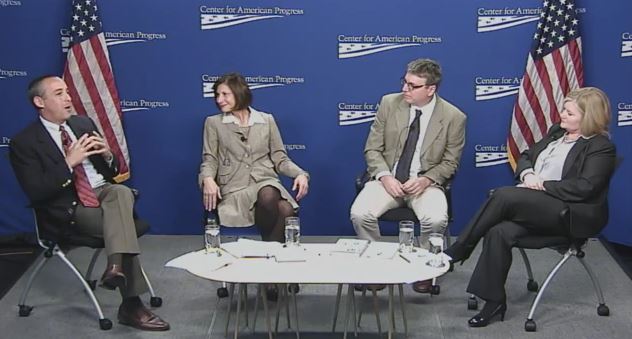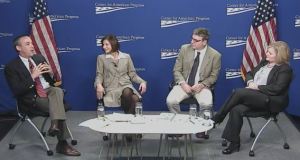“We Don’t Need No Thought Control” in Schools

A panel discussion at Center for American Progress called for brain research in the classroom and shared their remarks on mandating scientific research in the classroom.
Giving a final exam-type test on the first day of class, Benedict Carey, science reporter for The New York Times and author of How We Learn, said, “[It] prepares the brain to receive the information subsequently” because “you see the topics that are coming” later in the semester. He admitted, “Pre-testing is very counterintuitive,” but claimed these pre-tests, which a majority of students fail, “help” students get higher grades on final exams.
Glenn Whitman, director of the St. Andrew’s School’s Center for Transformative Teaching and Learning, agreed with Carey and said these pre-tests are good for students “as long as we’re taking the threat out of it.” By giving these made-to-fail exams first, “We’re priming the brain for what’s coming [next]” and it is a “nonthreatening, unforced amounts of academic recall.”
Carey continued his remarks, pushing for integrating brain research on student learning in the classroom: “I would teach it directly: Learning 101.” Carey said, “Start teaching directly to the kids what these techniques are. They’re not hard; they’re easy to study.” Also, these techniques should be “integrated into study hall” because they are “very simple changes…bottom up and you can give them right to the student,” Carey concluded, “Give kids the information” in order for them to succeed and adjust their learning immediately.
Mariale Hardiman, clinical education professor at Johns Hopkins University and co-founder and director of the university’s Neuro-Education Initiative noted that academic “research never reaches the classroom” and advocated for this to change in America. She said that among teachers and educators, there is “a real appetite for researchers to want to connect what they do to education outcomes.” While pursuing her doctorate degree at Johns Hopkins and working as a Baltimore school principal, she created a “brain targeted teaching model.” She started to use this model in her school, training teachers on how to use it in their classrooms. Hardiman claimed, “It became more fun for students, more interactive” and an added benefit was how her model integrated “the arts into content instruction.”
After switching from Baltimore city schools to Johns Hopkins, Hardiman was able to test her research in the classroom and in teacher training. She said, “We’re seeing significant difference,” after implementing her techniques and research. With the new emphasis on neuroscience by the White House, “the good news is that I’m seeing it more and more,” she said.
Whitman said, “[It] seems like one of the greatest ironies today” that teachers are resistant to integrating research into the classroom. The point of this recent push is to help students use knowledge “not…just for the Common Core assessment…but for life.” Whitman said, “We live in a cauldron of academic rigorous schools” and too often, there are two options: go to a rigorous school or not to. “We think it’s a false choice,” he said, “We believe you could have both…You shouldn’t have to choose.”
The goal of educators, Whitman said, is to “translate research and get better academic achievement.” “Teachers need more science,” he said, “And if you get them more science…the right research study…we can move the needle on achievement.”
Pink Floyd might have a thing or two to say about that.





